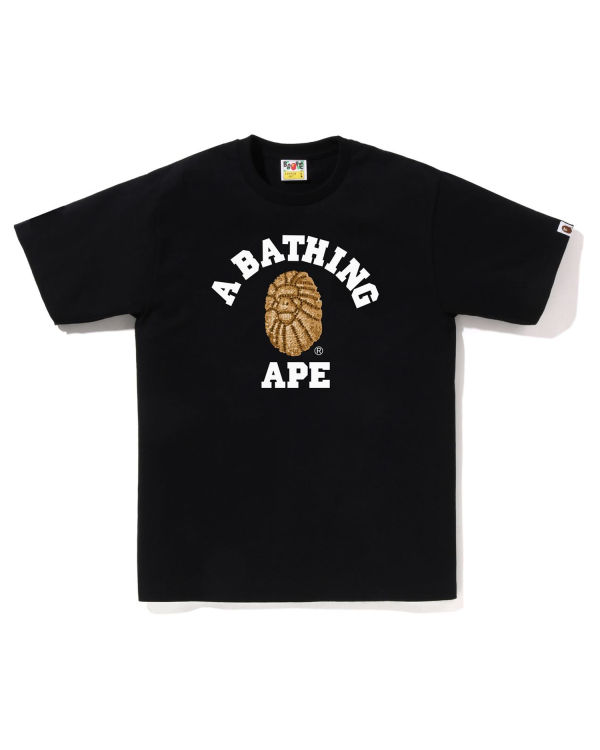
When it comes to streetwear fashion, Bape (A Bathing Ape) is a brand that has consistently pushed the boundaries of design and craftsmanship. Known for its bold graphics and unique aesthetic, Bape has not only made a significant impact in the fashion world but has also been at the forefront of innovation when it comes to materials used in garment production. In this article, we will explore some of the innovative materials used in Bape shirt production, examining their impact on the brand’s designs and the overall fashion industry.
One of the key innovative materials utilized in Bape shirt production is the use of camo prints. While camo prints have been around for decades, Bape has reimagined and evolved this classic design, creating their own unique variations. Bape’s camo prints are often bolder and more vibrant than traditional camouflage, incorporating a diverse range of colors and patterns. The use of innovative camo prints in Bape shirts has not only set the brand apart from its competitors but has also influenced the wider fashion industry, inspiring other brands to experiment with unconventional camo patterns.
Another innovative material used in Bape shirt production is synthetic fabrics, particularly polyester. Polyester is a synthetic fiber known for its durability, wrinkle resistance, and quick-drying properties. Bape has embraced polyester as a material for its shirts, ensuring that they are not only stylish but also functional. Polyester allows Bape shirts to retain their shape, even after multiple washes, making them long-lasting and resistant to wear and tear. Additionally, the quick-drying properties of polyester make Bape shirts ideal for active individuals or those living in humid climates. By incorporating polyester into their shirt production, Bape has succeeded in creating garments that are both fashionable and practical.
In addition to camo prints and synthetic fabrics, Bape has also explored the use of innovative materials like reflective fabrics in their shirt production. Reflective fabrics are designed to reflect light and enhance visibility in low-light conditions. Bape has incorporated reflective elements into their shirt designs, creating a unique visual effect that catches the eye. These reflective accents not only add a futuristic touch to Bape shirts but also serve a functional purpose, increasing the safety of the wearer in low-light environments. The use of reflective fabrics in Bape shirt production showcases the brand’s commitment to both style and functionality, further setting them apart in the fashion industry.
Furthermore, Bape has been at the forefront of using organic and sustainable materials in their shirt production. As the fashion industry becomes more conscious of its environmental impact, brands like Bape are taking steps to incorporate sustainable materials into their designs. Organic cotton is not only better for the environment, but it also provides a soft and comfortable feel to Bape shirts. By using organic cotton, Bape is aligning its designs with a growing consumer demand for sustainable fashion and demonstrating its commitment to responsible production practices.
Another innovative material that Bape has integrated into its shirt production is neoprene. Neoprene is a synthetic rubber known for its flexibility, durability, and water resistance. Bape has utilized neoprene in its shirt designs, creating garments that are not only visually striking but also provide functionality. Neoprene allows Bape shirts to retain their shape and structure, even after continuous wear, making them long-lasting and resistant to stretching or deformation. Additionally, the water resistance properties of neoprene make Bape shirts suitable for various weather conditions, adding to their versatility. The incorporation of neoprene into Bape shirt production showcases the brand’s innovation and commitment to creating garments that are both stylish and functional.
In conclusion, Bape stands out in the fashion industry for its innovative use of materials in shirt production. The brand’s exploration of novel materials such as innovative camo prints, synthetic fabrics, reflective fabrics, organic cotton, and neoprene has set them apart from other streetwear brands and influenced the wider fashion industry. Bape’s commitment to quality, durability, and functionality is evident in the materials they select for their shirts, ensuring that their garments not only look good but also stand the test of time. As Bape continues to push boundaries and explore new materials, their innovative spirit is likely to inspire other brands and shape the future of fashion.